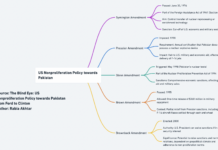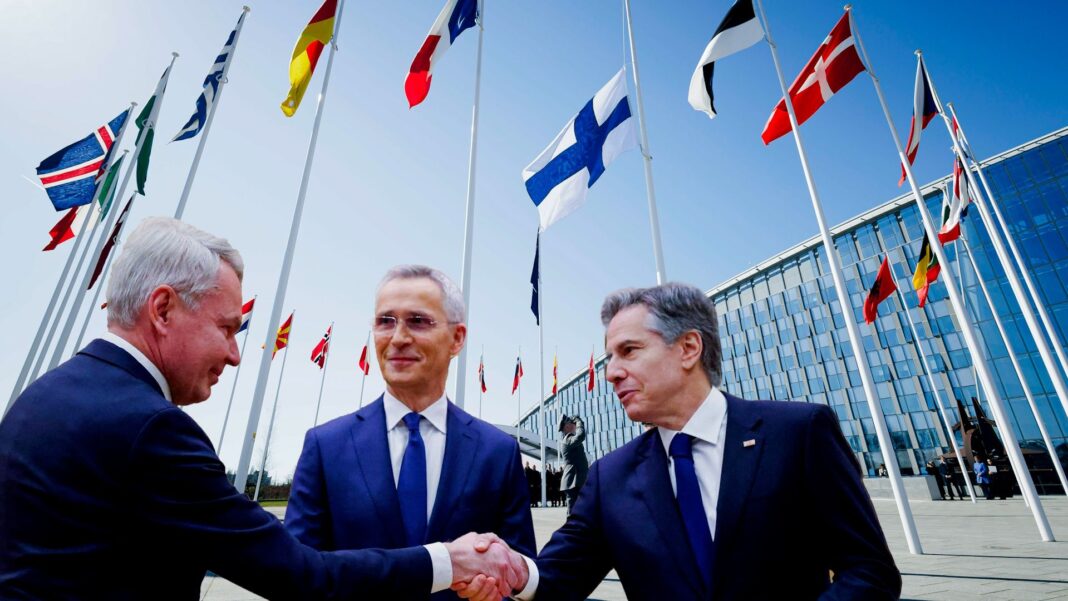Anum A. Khan
U.S. President Joe Biden is considering to pay a visit to Finland in July this year. This will coincide with preparations for the 2023 Vilnius Summit in the same month. This news comes on the heels of Finland becoming the 31st country to join the North Atlantic Treaty Organization (NATO). That Finland’s gambit is likely to add to Russian fears of NATO’s expansion means that it merits analyses. Even though US strategy documents argue against dividing the world into blocs, the reality on ground is drastically at odds, as evidenced by its bid to renew old alliances and build new ones. Therefore, this will have serious repercussions for stability within and across regions. It is reasonable to look at a number of scenarios that could pan out going forward.
Scenario 1: Russia perceives it as a threat to its mainland
Based on such fears and perceptions, Russia may vehemently react to NATO’s expansion by adopting a more aggressive policy towards Finland and European states bordering the country. Russia may also climb up the escalation ladder vis-à-vis Ukraine. This fear could partly be explained through the lens of the Biden administration’s integrated deterrence approach, which is about integration across domains, regions, spectrums of conflict, governments, and network of alliances and partnerships. The accession of Finland to NATO might be part of a larger integrated deterrence approach. Certainly, the integration and enhancement of allies within and outside NATO will increase the areas of vulnerability for Russia. Resultantly, Russia’s conventional and nuclear responses to acts of aggression will be affected by all this. Indeed, there is a possibility that, to strengthen integrated deterrence through bolstering alliances under the National Defense Strategy (NDS), the U.S. may place conventional and nuclear forces in Finland to bolster regional nuclear deterrence. Additionally, the U.S. may also place a missile defense system in Finland, which was generally indicated in the U.S. Missile Defense Review 2022. It is important to note here that Finland is also set to buy Israel’s David Sling, to counter ballistic and other high-speed missiles, subject to the approval of a sales release by the U.S. All this, one must stress, will add to Russia’s discomfiture.
The possible Swedish membership of NATO will also open doors for smaller European states to be used as buffer zones by the U.S. in any future conflict. This means that, by joining NATO, bordering European and Baltic nations run the risk of Russian attacks in any future conflict between the U.S. and Russia. Consequently, the strategic competition in the Arctic region will increase manifold.
Scenario 2: Russia responds calmly to this accession
In this scenario, if the Ukraine crisis does not escalate, there may be room for negotiations and dialogue on arms control. Regardless of the mention in the U.S. NDS about strengthening strategic stability through dialogue with competitors, Russia still perceives that the West is not ready for dialogue and negotiations with it. Also, the present environment is not conducive for arms control negotiations, especially at a time when the future of the New START Treaty, the only remaining arms control treaty between the U.S. and Russia , is in jeopardy. Therefore, even if Russia responds calmly, it will further expand its military and nuclear modernization in response to NATO’s expansion.
Scenario 3: In any future conflict, the probability of Russian defeat by NATO increases
The possibility of this scenario transpiring is very remote but cannot be ignored. Under this proposition, in a possible future war, the U.S. may engage Russia militarily from all fronts, with a view to dismembering it. In this scenario, the U.S. and NATO will aggressively use gray-zone tactics and hybrid warfare to attack all elements of Russia’s national power. Nevertheless, if the U.S. is unable to demonstrate escalation dominance, the war can spiral into total war.
Therefore, one could argue that, by choosing sides, Finland has not only lost an opportunity to normalize its relations with Russia but also its status as a confidence-building factor between U.S. and Russia in particular and Europe and Russia in general. Many scholars view this instance of NATO’s expansion a result of the war in Ukraine. However, the expansion had been a subject of debate even before the Ukraine war. It is safe to say that the Finnish membership is not a direct consequence of the war but will add fuel to the already strained relations between two nuclear powers. It will also prolong the Ukraine war in the absence of dialogue.
Another important element is the Chinese role. Western scholars believe that China and Russia may get closer, to deter the U.S. Though some analysts and Western policymakers believe that the dragon is waking up, China will not commit militarily if Russia goes to war with the U.S. Rather, it will urge a solution to such a complex security issue through dialogue and negotiations.
The U.S. is not only influencing the expansion of NATO but also opting for other alliances across regions to deter China and Russia. These include AUKUS and the Quadrilateral alliance(QUAD). As the U.S. views India as a major defense partner and a net security provider in the Afro-Asian Ocean, it is helping increase Indian nuclear and conventional capabilities. Moreover, in the past, Russia added India into the ambit of greater foreign policy and defense cooperation. Nevertheless, India has strategically placed itself and is exercising so-called strategic autonomy to get closer to the U.S. through Quadrilateral axis and other logistic exchange agreements. It will be important to see how India will play its part in this grand design where it is already exercising hegemonic designs vis-à-vis its neighbors and is less likely to fight U.S. wars with Russia or China. This will further exacerbate the security dilemma in South Asia.
The overall transfer of defense technologies, majorly in cyber and space domains, emerging technologies, artificial intelligence, and machine learning by the US to its allies will have negative effects, creating disparities between states by dividing them into haves and have-nots, yet again. Moreover, such arming of allies to the teeth will persuade them to use such military and nuclear modernization to challenge their adversaries, where the latter will be at a disadvantage because of a lack of access to such technologies. This will further weaken regional strategic stability while enhancing security dilemmas.
Major powers like the U.S., Russia, and China must act as responsible nuclear weapon states, opt for dialogue and arms control measures, and become a beacon of hope and exemplars for smaller nuclear weapon states. The world does not need another world war to realize the importance of negotiations and crisis resolution for global peace and stability.
Anum A. Khan is Associate Director, Center for International Strategic Studies (CISS).

















